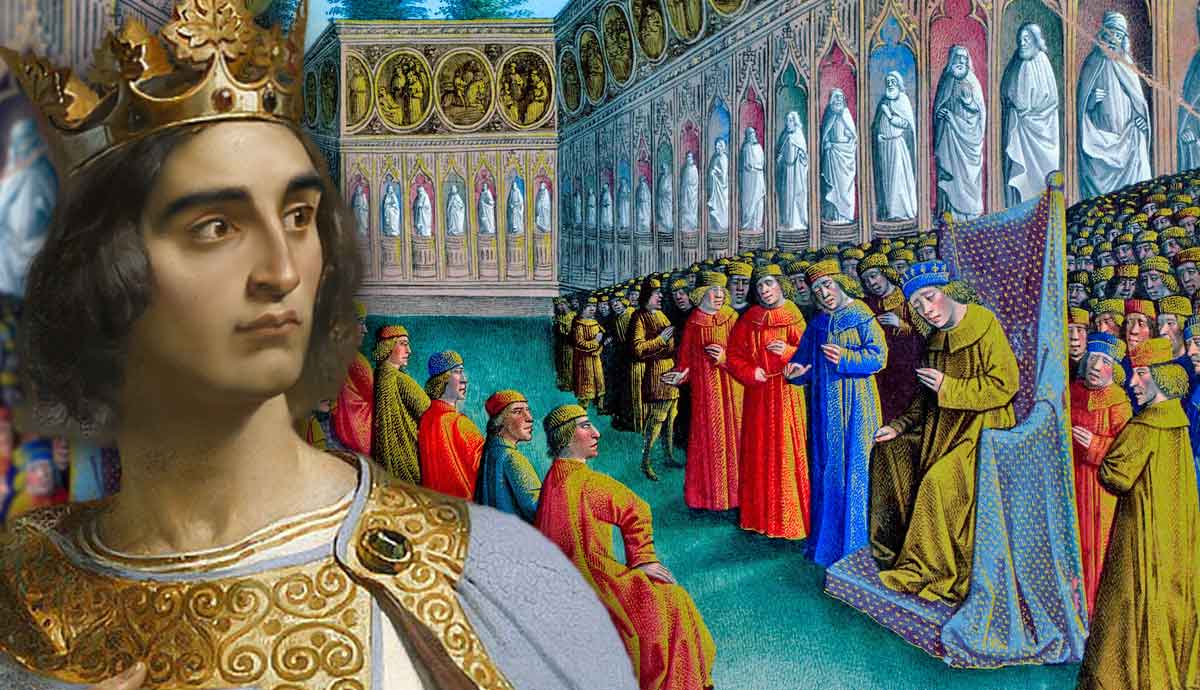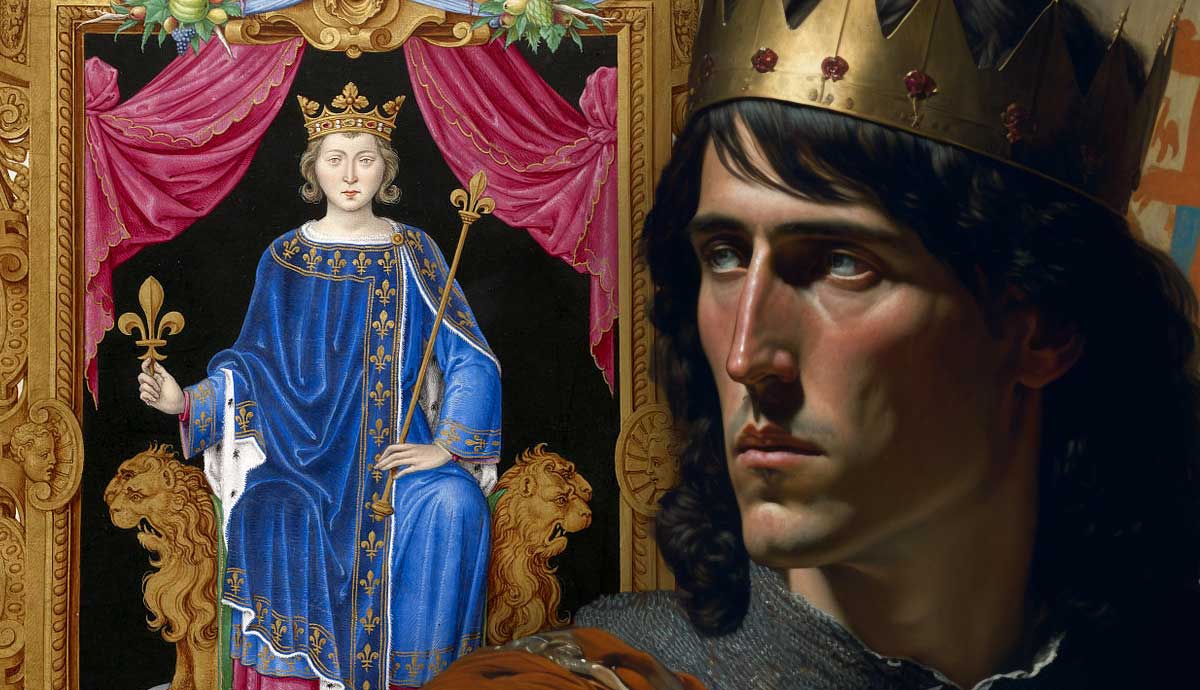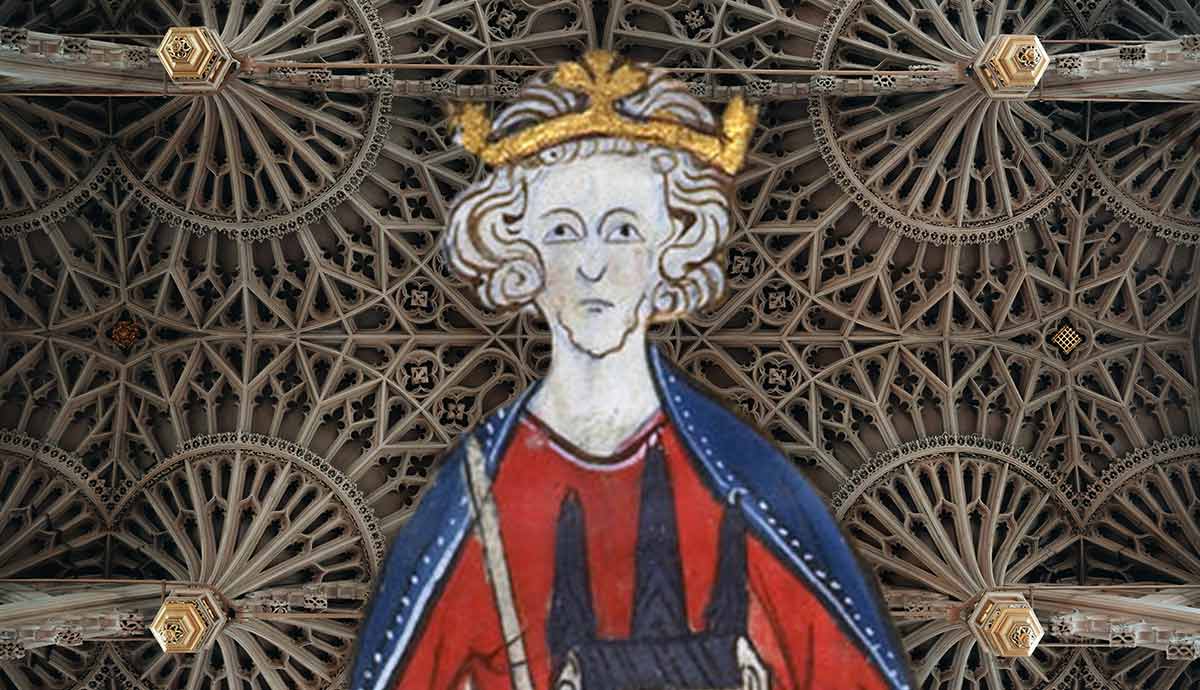
The Kingdom of Jerusalem, established in the aftermath of the First Crusade, served as a power base for Christendom in the East. Unlike contemporary kingdoms in Europe, the leaders were not chosen purely by primogeniture, but rather they were elected. This article aims to discuss five of the most significant queens and kings of Jerusalem, and the various factors which made them stand out among all the other monarchs of the Kingdom of Jerusalem.
1. King Baldwin I (r. 1100-18)

Often regarded as the First King of Jerusalem, Baldwin I gave his namesake to many other famous Baldwins who would go on to rule the Kingdom of Jerusalem in the coming century.
Born around 1060, Baldwin was the youngest son of Eustace II, Count of Boulogne and Ida of Lorraine. His reputation before he came to the throne is part of the reason he deserves a place on this list — he was, without question, one of the greatest military leaders of the First Crusade.
In 1095, when Pope Urban II had made the call for the First Crusade, Baldwin’s older brother Godfrey immediately joined the fight for Christendom against “the Infidel,” and Baldwin soon followed in his footsteps. During the crusade, Baldwin established himself as a keen military commander.
While there were some early major skirmishes (aided by the Byzantine Emperor Alexios I Komnenos) Baldwin remained unscathed throughout the first year of the crusade. By 1097, Baldwin had seized important fortress towns along the River Euphrates, and in 1098 one of the most important gains of the crusade: seizing Edessa. Here, he established the first Crusader State on March 10, 1098 — it would last for another 52 years. From this base in Edessa, Baldwin successfully provided food for the crusader army at the infamous Siege of Antioch (October 1097-June 1098).

Baldwin’s brother Godfrey was elected as the first King of Jerusalem by the Crusaders but he died in 1100. The kingship was then offered to Bohemond I of Antioch (Baldwin’s uncle), but he had been captured by Muslims at this point. In response, Baldwin marched on Jerusalem and was crowned king (in Bethlehem) on 25 December 1100.
Baldwin’s rule as king was arguably the most successful of all of the kings of Jerusalem, and he helped to establish the Crusader States through the sheer amount of towns and provinces that he had captured. Caesarea and Arsuf were captured in 1101, Acre three years later, and Beirut and Sidon in 1110 and 1111 respectively. Although Baldwin I failed to capture Tyre altogether, his victory at the Third Battle of Ramla in 1105 was enough to put off the Egyptians, who attempted no further major campaigns against the Kingdom of Jerusalem.

Interestingly, but unsurprisingly, Baldwin was the only elected monarch in the Latin East, so he claimed suzerainty over all of the Crusader States. Some historians view this as Baldwin uniting the Crusader States together under the umbrella of the Kingdom of Jerusalem, and note his ambitions of establishing a permanent “crusader colony” in the Latin East.
Baldwin’s incessant warfare throughout his reign would eventually catch up with him. In 1116, he fell seriously ill and began redistributing his assets, before making a swift recovery.
On the way to a campaign in Egypt in 1118, Baldwin fell ill once more. He was to be returned home, but only made it as far as Al-Arish on the edge of the Fatimid Empire. Baldwin died on April 2, 1118, and was buried next to his brother Godfrey in the Church of the Holy Sepulchre in Jerusalem.
Not only was Baldwin a savvy military commander and a clever politician, but he was also a good king who established the Kingdom of Jerusalem as a major player in the Crusades for the next two centuries. Without Baldwin I at the helm, it is unlikely that the Kingdom of Jerusalem would have survived as long as it did.
2. Queen Melisende (r. 1131-53)

It was rare for a woman in the medieval world, particularly in the Middle East, to make a list of the greatest monarchs. However, Melisende, Queen of Jerusalem, thoroughly deserves her place.
Melisende came from good stock — her grandfather was the aforementioned Baldwin I of Jerusalem, while her father was Baldwin II, who had also ruled as King of Jerusalem. Despite coming from royal lineage, Baldwin II knew that his eldest daughter had to marry into a strong family to ensure their family’s legacy carried on, and that is exactly what happened. In 1129, Melisende married Fulk V, Count of Anjou in Jerusalem.
Fulk was a renowned military commander and a keen crusader. He also had a son by a previous marriage, called Geoffrey. Geoffrey was married to Empress Matilda, the daughter of King Henry I of England, and his heir presumptive. Melisende had forged a very powerful alliance as a result of her marriage to Fulk.

In 1130, Melisende gave birth to a son (who would go on to rule as the future Baldwin III of Jerusalem), and as a result her father made the necessary steps to ensure that Fulk and Melisende ruled jointly as monarchs of Jerusalem. This included the baby Baldwin III — so that Fulk could not install anyone else as a King of Jerusalem. Baldwin II died a year later, so Fulk and Melisende ascended the throne as joint rulers.
Interestingly, Fulk was not the only monarch who Melisende would co-rule with. In 1143, Fulk died, and Melisende co-ruled Jerusalem with their son, Baldwin III. She had a complex relationship with him — some historians view her as being a wise and providing mother, others see her as overbearing. She may have been the real ruler while Baldwin was a mere puppet.
By 1153, mother and son had reconciled after a period of difficulty, and it was around this time that Melisende retired from her political duties. In 1161, she became seriously ill (the likely cause was a stroke), and she died on September 11, 1161.
During her 30-year reign, she oversaw many things, from protecting Jerusalem in the failed Second Crusade to ensuring that the Kingdom of Jerusalem reached its largest territorial extent under her overlordship. She was also a rare case of a woman in the medieval world known for her prowess as a ruler. She went down as one of the most successful monarchs that the Kingdom of Jerusalem had ever had.
3. King Amalric I (r. 1163-74)

The next significant monarch of Jerusalem on our list is King Amalric I, who was a son of Fulk and Melisende. Following Fulk’s death from a hunting accident in 1143 and the ongoing conflict between his brother Baldwin III and his mother Melisende, Amalric sided with his mother.
This resulted in both he and his mother being held prisoner in the Tower of David. However, following their reconciliation, Amalric was free to return to his fiefdom of Jaffa.
In 1157, he married Agnes of Courtenay, a hugely significant event in Amalric’s life. Two of their children (Sibylla and Baldwin IV) would go on to rule the Kingdom of Jerusalem.
Baldwin died in 1163, and the throne passed to Amalric, whose immediate focus was on campaigning in Egypt. He led two successful invasions but was never able to hold onto any Egyptian territory.
Amalric successfully brought the Byzantines to his cause — and he is perhaps best remembered for forging an alliance between the Byzantine Empire and the Crusader States. Following the annulment of his marriage with Agnes, he married Byzantine Princess Maria Komnena in 1167 and he would go on to father another future ruler of Jerusalem (Isabella I).
The following year, he negotiated a joint alliance with the Byzantine Empire against the Egyptians, but this turned out to be bad timing. The rise of one of history’s most notorious military leaders was just around the corner: Saladin.

In 1170, Saladin invaded the Kingdom of Jerusalem and took the port city of Eilat, which formally cut off the Kingdom of Jerusalem from the Red Sea. It was not until the following year that Saladin was formally declared Sultan, and fortunately for Amalric I, his attention was fixed elsewhere.
Amalric’s reign came to an end on July 11, 1174, when he died of dysentery. Perhaps Amalric’s biggest legacy that he left behind was that he fathered three monarchs of Jerusalem, thus preserving his legacy for years to come.
4. King Baldwin IV (r. 1174-85)

It is likely that you will have heard of Baldwin IV under his rather sad nickname, the “Leper King.” As mentioned above, Baldwin was a son of Amalric and Agnes and was born around 1161. Baldwin had shown symptoms of leprosy as a child, but he was not formally diagnosed with the condition until after he became king in 1174.
Baldwin succeeded his father to the throne as King of Jerusalem upon the latter’s death, although Raymond III, Count of Tripoli, ruled in his name until he reached the age of majority two years later, in 1176. Baldwin was deemed to be a clever politician, although it was soon realized that he would never be able to marry or have children due to his leprosy. However, this didn’t stop him from becoming arguably the greatest-ever king of Jerusalem.
Baldwin initially planned on abdicating once he had arranged a successful marriage for his heir, his sister, Sibylla. Sibylla was married to William of Montferrat, a prominent member of the Italian nobility, but he died shortly after the marriage, although Sibylla was pregnant with their son.
As mentioned above, Saladin was on the rise and in 1177, he gathered his forces and attacked the crusader city of Ascalon. Baldwin himself was trapped in the city, but managed to escape. Saladin’s forces still believed that Baldwin IV was inside the city, but Baldwin routed the Muslim forces, and attacked them at Montgisard.

This was all despite the fact that Baldwin IV was only 16 years old at the time and suffering from leprosy! It was this determination that meant Baldwin IV was viewed as one of the greatest-ever crusader kings. He also managed to secure a peace with Saladin in 1180, something very few other crusader leaders were able to achieve.
In 1183, the peace treaty broke down, and Saladin attacked Aleppo. Baldwin’s health was rapidly deteriorating at this point, but he still did not shy away from Saladin. The Muslim victory at Aleppo ensured that the Kingdom of Jerusalem was surrounded, and Baldwin IV, determined as ever, left his residence to go into the city while being carried in nothing but a litter because he was so weak.
It was at this point that he crowned Sibylla’s son as the next king — Baldwin V. He also made sure that the aging Raymond III was designated as the younger Baldwin’s regent.
Baldwin IV’s incredibly determined nature was likely a factor in how he survived for so long given the debilitating nature of leprosy. He died aged 24 in Spring 1185.
Thanks to his determination, he not only survived leprosy for much longer than expected, he also managed to negotiate peace with Saladin, and even still undertook his political duties during his joint reign with his nephew, right up until the end.
5. Queen Sibylla (r. 1186-90)

Sibylla is another rarity like Melisende — a successful female ruler in the medieval Middle East. The sister of King Baldwin IV, daughter of King Amalric, and mother of King Baldwin V, it is fair to say that Sibylla was surrounded by great men — but this does not take anything away from the strength of her own character.
Following Baldwin IV’s death in 1185 and the death of the short-lived Baldwin V, Sibylla moved quickly to prevent Raymond III from taking this opportunity to seize the throne for himself.
Due to the unpopularity of her second marriage to Guy of Lusignan, she agreed to rule by herself and set Guy aside as long as she ruled the Kingdom of Jerusalem as its Queen, and on the condition that she could choose her next husband once she was crowned.
This turned out to be a very clever move from Sibylla. At her coronation in 1186, she chose Guy as her husband, and then crowned him herself!

However, the disruption and civil unrest that this caused within the Kingdom of Jerusalem also led to its downfall. Saladin sensed unrest and chose the right time to strike. In 1187, he invaded, reducing the once-mighty Kingdom of Jerusalem to just one city (Tyre).
One of the most famous battles of the Second Crusade, the Battle of Hattin, saw Guy captured and taken prisoner by Saladin’s forces. Nevertheless, Sibylla’s resolute spirit (like that of her brother Baldwin IV’s) kept her going. She managed to persuade Saladin to release Guy, which he eventually did.
Sibylla died of a disease epidemic that swept throughout Acre while she was outside the city as Guy was besieging it on July 25, 1190. Without Sibylla’s resolute and determined nature, it is highly unlikely that she would have become Queen of Jerusalem in the first place, and even less likely that anyone else would have managed to persuade Saladin to release Guy of Lusignan.










